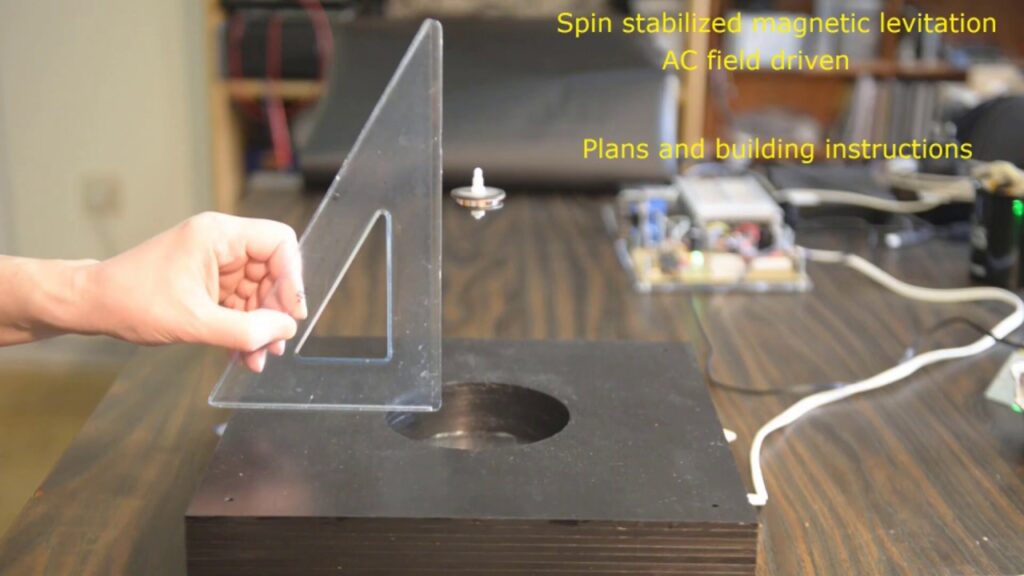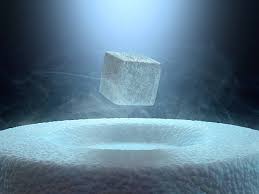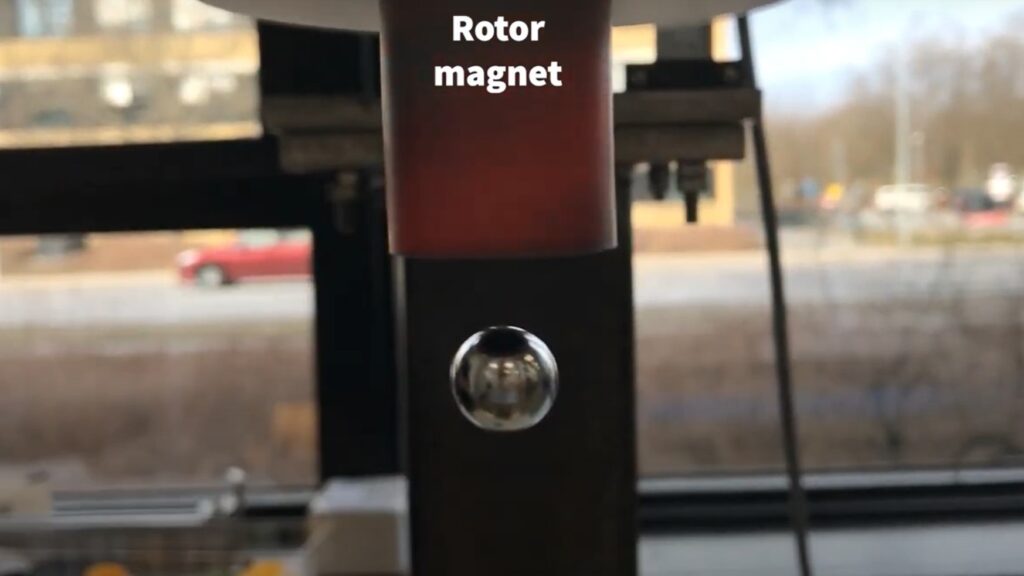Rotation can drive magnetic levitation systems by utilizing electromagnetic induction. A rotating magnet generates a changing magnetic field around it, inducing an electric current in a nearby conductor through electromagnetic induction.
This current creates its own magnetic field, which opposes the original magnetic field, resulting in repulsion between the rotating magnet and the induced magnetic field in the conductor. As a consequence, the conductor levitates or hovers above the magnet due to the repulsive force.
The levitation height and stability can be adjusted by controlling parameters such as the rotation speed of the magnet and the properties of the conductor. This principle underlies various applications including maglev trains, magnetic bearings, and levitating displays.
How does electromagnetic induction work in rotation?

Electromagnetic induction in rotation refers to the generation of an electromotive force (EMF) in a conductor when it is exposed to a changing magnetic field due to rotation. This phenomenon is described by Faraday’s law of electromagnetic induction.
When a conductor, such as a coil of wire, rotates within a magnetic field or when the magnetic field surrounding the conductor changes, it induces an electromotive force, or voltage, across the ends of the conductor. This induced voltage creates an electric current if the circuit is closed.
The key principle behind electromagnetic induction in rotation is that a changing magnetic field induces an electric field, which in turn generates an electric current if there’s a closed conducting path available.
This process is utilized in various devices, such as electric generators, where mechanical energy (rotation) is converted into electrical energy. In generators, a coil of wire rotates within a magnetic field, inducing an EMF across its ends, which is then converted into electricity as it flows through a closed circuit. Similarly, this principle is used in devices like dynamos and alternators found in cars, turbines, and many other applications.
What causes repulsion between a rotating magnet and a conductor?
The repulsion between a rotating magnet and a conductor occurs due to the interaction between the magnetic field generated by the magnet and the induced magnetic field in the conductor.
When a magnet rotates near a conductor, it creates a changing magnetic field around the conductor. According to Faraday’s law of electromagnetic induction, this changing magnetic field induces an electromotive force (EMF) and subsequently an electric current in the conductor. The induced current, in turn, generates its own magnetic field according to Ampère’s law.
Now, if the direction of rotation of the magnet and the direction of the induced current are such that their magnetic fields oppose each other, they will repel each other. This repulsion occurs because like magnetic poles repel each other, and the induced magnetic field in the conductor interacts with the magnetic field of the rotating magnet, causing repulsive forces.
This phenomenon is fundamental to various applications, including eddy current braking systems, where the repulsion between the rotating magnet and the conductor slows down the rotation of the magnet, converting kinetic energy into heat. It’s also exploited in some levitation systems and magnetic bearings.
How does repulsion lead to the levitation effect in magnetic systems?

The levitation effect in magnetic systems is based on the principle of magnetic repulsion between two magnets or between a magnet and a conductive material, typically induced by an external magnetic field.
When two magnets are brought near each other with like poles facing each other (north to north or south to south), they experience repulsive forces. These repulsive forces act to push the magnets away from each other, creating a levitation effect if one of the magnets is free to move in space.
In magnetic levitation systems, such as maglev trains or magnetic levitation toys, electromagnets are often used to create the repulsive force necessary for levitation. An electromagnet is a coil of wire with an electric current flowing through it, generating a magnetic field. By controlling the strength and direction of the current flowing through the electromagnet, the strength and polarity of the magnetic field can be controlled.
When a magnet or a conductive material is brought near the electromagnet, the changing magnetic field induces currents in the material according to Faraday’s law of electromagnetic induction. These induced currents generate their own magnetic fields, which interact with the magnetic field of the electromagnet. If the induced magnetic field opposes the magnetic field of the electromagnet, repulsion occurs, leading to levitation.
By precisely controlling the strength and direction of the magnetic fields, it’s possible to achieve stable levitation of objects. This principle is utilized in various applications, including maglev trains, where the repulsive forces between the train’s electromagnets and the magnetic guideways allow the train to levitate and move without friction along the track.
References
- J. M. Hermansen et al., “Magnetic levitation by rotation,” Phys. Rev. Appl. 20, 044036 (2023).
- H. Ucar, “Polarity free magnetic repulsion and magnetic bound state,” Symmetry 13, 442 (2021).
Final Words
When something magnetic spins, it can make other things float. This is called magnetic levitation. It’s like magic!
We see it in cool things like trains that float above tracks without touching them. So, remember, spinning magnets can do some amazing things!
